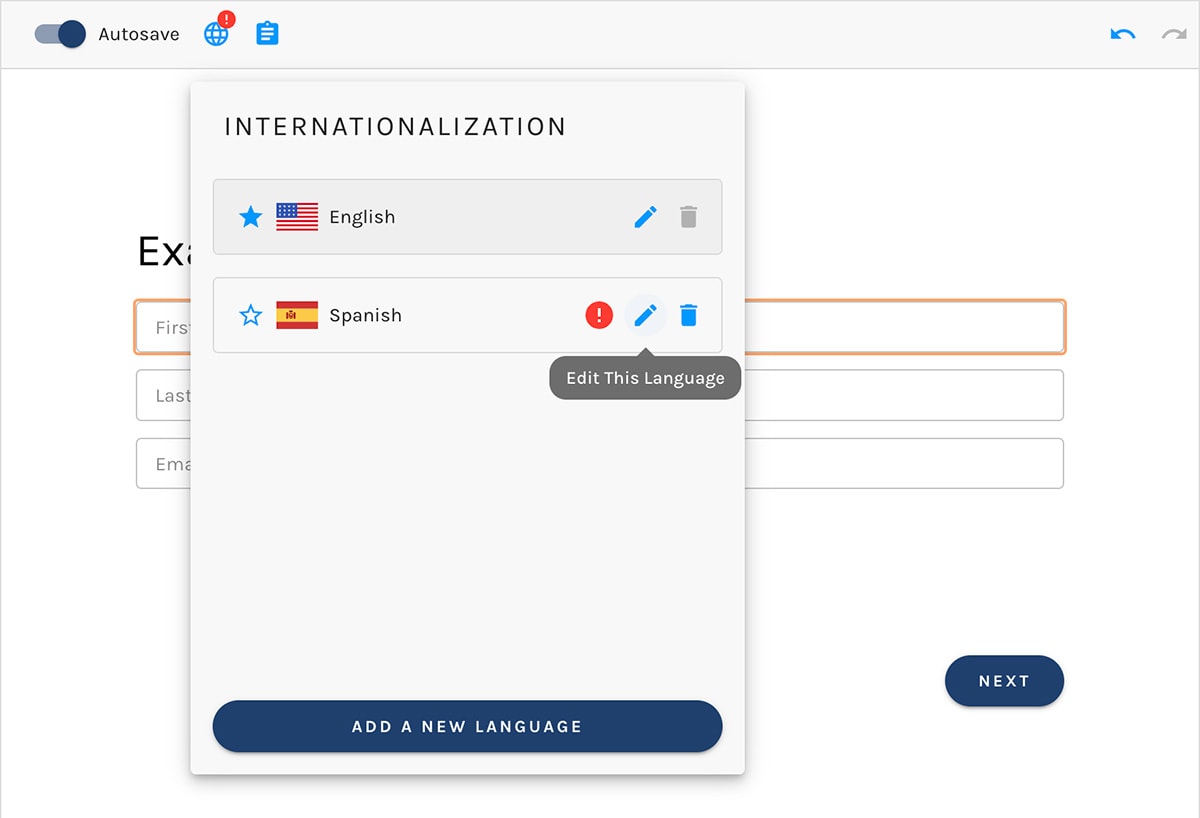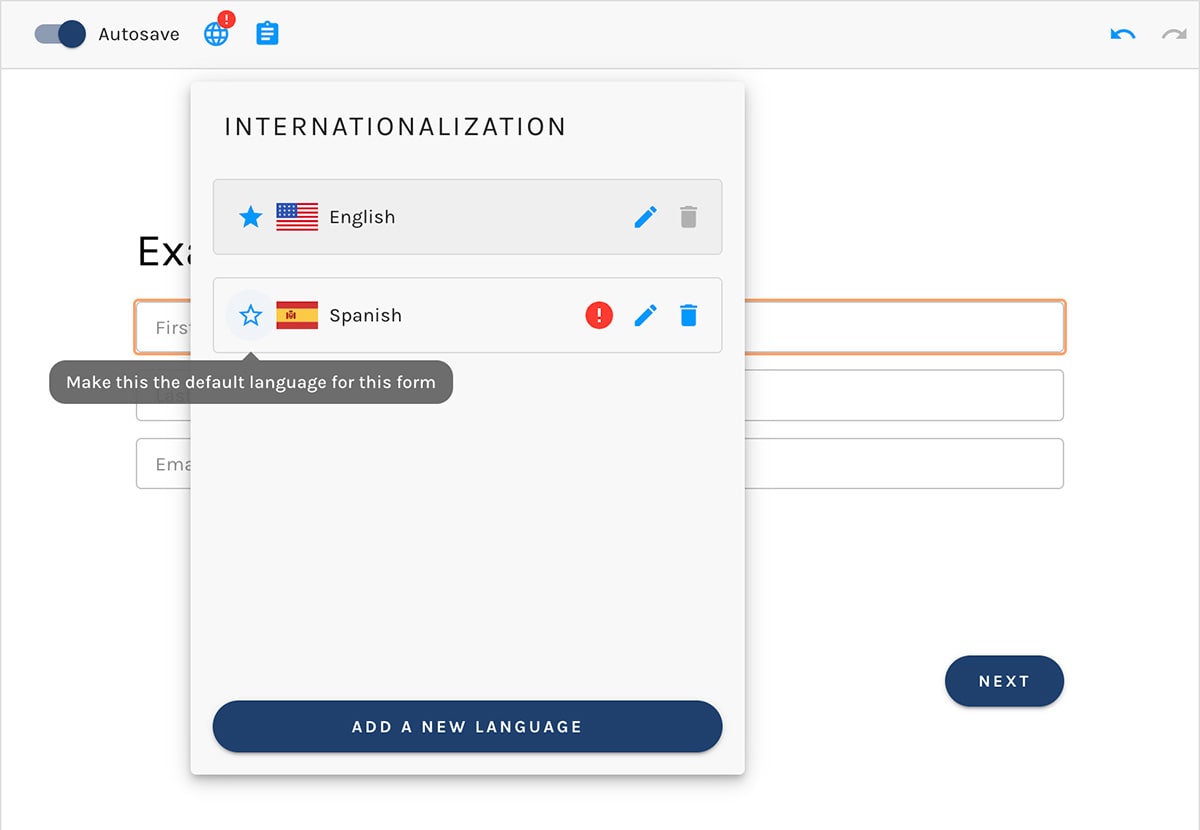Internationalization
Paminga enables you to translate your emails into any number of languages.
When providing translations, Paminga ensures completeness and prevents publishing of assets with incomplete translations.
Once translated, you can leverage your prospect's preferred language to show/hide sections, rows, and individual elements.
Internationalization:
Add a Language
Click the "Internationalization" icon (a globe) shown in the image above.
Click the "Add a New Language" button, and search for the language you'd like to add. You may add as many languages as you need.
Internationalization – Add a New Language:

Providing Translations
Paminga offers two ways for you to add translations to your emails:
The Set Language Dialog
The Set Language Dialog provides a single place where you can add translations for all customer-facing text in your marketing asset.
Internationalization – Set Language Dialog:

You may not be able to get all translations in place at once. No problem! Click the "Save" button to save your progress and finish translating later.
Note: you cannot publish a email with incomplete translations.
Returning to the Set Language Dialog
You may return to the set language dialog any time by clicking the "globe" icon for internationalization and clicking the "edit" icon for the language you want to work on.
Internationalization – Edit Language:

When Editing Your Asset
Once you've added and saved a language to your email, you may close the Set Language Dialog and provide translations by editing the asset as you normally do.
It's easy to change the language you are viewing/editing your asset in.
Switching Languages
You may toggle between different languages by clicking the "globe" icon for internationalization, then clicking on the language you wish to view your email in.
Validating Translations Are Complete
Paminga will make it very obvious when you've added a language but not yet provided all required translations.
Paminga also prevents you from publishing your email with errors (like incomplete translations), ensuring that you do not publish an asset that cannot provide an excellent experience to your prospects.
Changing the Default Language
Every email has a default language. Currently, the default always starts out as English. We plan on making it possible to set your default language globally in the future.
The default language comes into play when your email is viewed on your website: if a prospect's web browser is set to use a language for which you have not provided a translation, your email will be displayed in its default language.
You may change the default language for your email by clicking the "globe" icon for internationalization, then clicking the "star" icon next to the language you'd like to set as the default.
Internationalization – Setting a Default Language:



